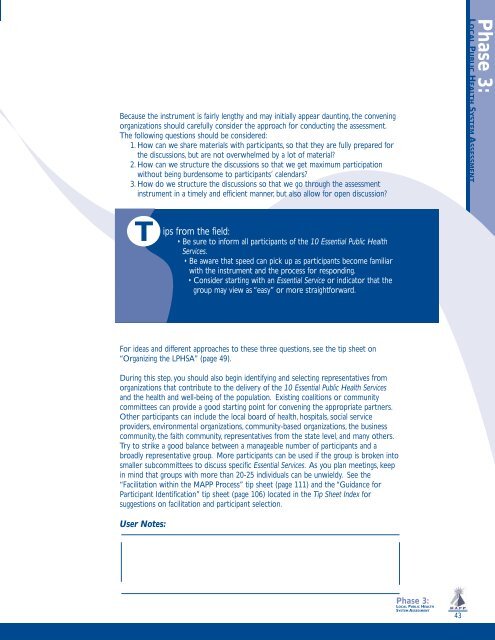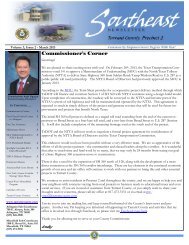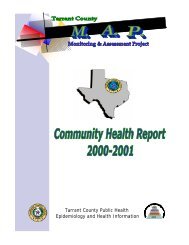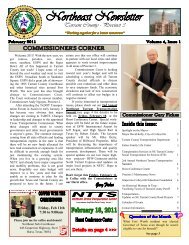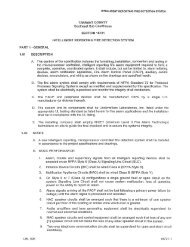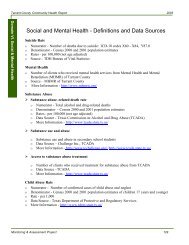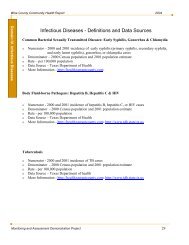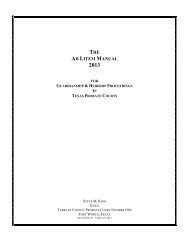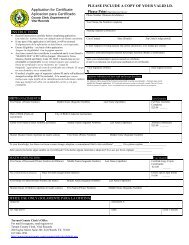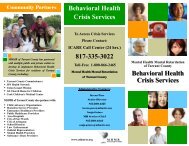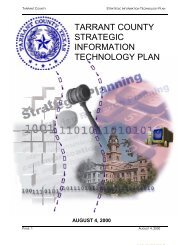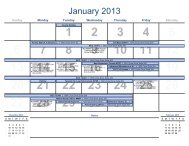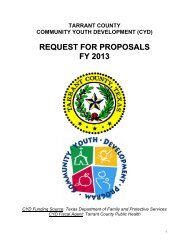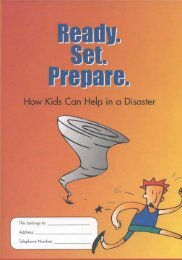MAPP Handbook - The National Association of County and City ...
MAPP Handbook - The National Association of County and City ...
MAPP Handbook - The National Association of County and City ...
Create successful ePaper yourself
Turn your PDF publications into a flip-book with our unique Google optimized e-Paper software.
Because the instrument is fairly lengthy <strong>and</strong> may initially appear daunting, the convening<br />
organizations should carefully consider the approach for conducting the assessment.<br />
<strong>The</strong> following questions should be considered:<br />
1. How can we share materials with participants, so that they are fully prepared for<br />
the discussions, but are not overwhelmed by a lot <strong>of</strong> material?<br />
2. How can we structure the discussions so that we get maximum participation<br />
without being burdensome to participants’ calendars?<br />
3. How do we structure the discussions so that we go through the assessment<br />
instrument in a timely <strong>and</strong> efficient manner, but also allow for open discussion?<br />
Phase 3:<br />
LOCAL PUBLIC HEALTH SYSTEM ASSESSMENT<br />
T<br />
ips from the field:<br />
• Be sure to inform all participants <strong>of</strong> the 10 Essential Public Health<br />
Services.<br />
• Be aware that speed can pick up as participants become familiar<br />
with the instrument <strong>and</strong> the process for responding.<br />
• Consider starting with an Essential Service or indicator that the<br />
group may view as “easy” or more straightforward.<br />
For ideas <strong>and</strong> different approaches to these three questions, see the tip sheet on<br />
“Organizing the LPHSA” (page 49).<br />
During this step, you should also begin identifying <strong>and</strong> selecting representatives from<br />
organizations that contribute to the delivery <strong>of</strong> the 10 Essential Public Health Services<br />
<strong>and</strong> the health <strong>and</strong> well-being <strong>of</strong> the population. Existing coalitions or community<br />
committees can provide a good starting point for convening the appropriate partners.<br />
Other participants can include the local board <strong>of</strong> health, hospitals, social service<br />
providers, environmental organizations, community-based organizations, the business<br />
community, the faith community, representatives from the state level, <strong>and</strong> many others.<br />
Try to strike a good balance between a manageable number <strong>of</strong> participants <strong>and</strong> a<br />
broadly representative group. More participants can be used if the group is broken into<br />
smaller subcommittees to discuss specific Essential Services. As you plan meetings, keep<br />
in mind that groups with more than 20-25 individuals can be unwieldy. See the<br />
“Facilitation within the <strong>MAPP</strong> Process” tip sheet (page 111) <strong>and</strong> the “Guidance for<br />
Participant Identification” tip sheet (page 106) located in the Tip Sheet Index for<br />
suggestions on facilitation <strong>and</strong> participant selection.<br />
User Notes:<br />
Phase 3:<br />
LOCAL PUBLIC HEALTH<br />
SYSTEM ASSESSMENT<br />
43


